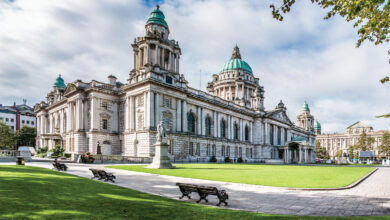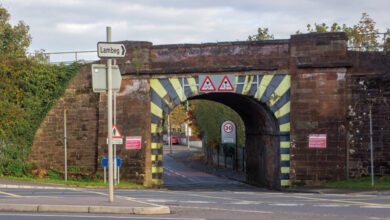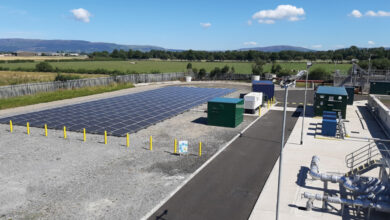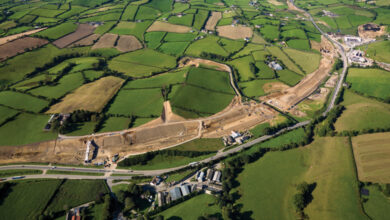Making urban places good
An overview of the Department of the Environment’s Urban Stewardship and Design Guide which aims to establish the key principles behind good place making.
We all have our own idea of what makes a particular urban place we like a good place. It may be somewhere architecturally stunning or a location with historic charm and atmosphere or just a pleasant place to watch the world go by. It may simply feel cool. Whatever it is, it has qualities that appeal even if they are hard to define. And indeed there is no real official definition of what constitutes a good place.
There is nonetheless a view in parts of Government in Northern Ireland that we should try to define what makes a place ‘good’ – since part of the path to a ‘brighter more prosperous future for all’ must be the creation of more ‘good places’ through improved place-making and better urban stewardship.
To this end, the Department of the Environment, Planning Policy Division last year published a design guide aimed at establishing the key principles behind good place-making, with the further ambition of trying to inform and inspire those involved in designing and managing urban places. The guide ‘Living Places – An Urban Stewardship and Design Guide for Northern Ireland’ was produced with the assistance of architects and master planners Paul Hogarth Company and was described as ‘a new form of planning guidance’ aimed not only at those involved in the statutory planning process, but everyone interested in creating a better urban environment.
However, despite the broader appeal intended and the more user-friendly language deployed, the Guide does pack a punch. Alongside the existing body of planning guidance the guide is to be a material consideration in the processing of planning applications. In this respect planners in assessing applications in urban places will be looking for evidence of some of the ‘qualities’ identified as desirable in the design guide.
Living places
The design guidance focuses first on ‘living places’ which it defines as any urban place whether in cities, towns, villages or neighbourhoods – indeed anywhere people live in numbers or assemble, whether metropolitan or rural in character. It then goes on to show examples of good places and highlights some of the negative characteristics of ‘bad’ places. Among the good places, Eglantine Avenue in South Belfast is noted as a good street and Castlewellan and Broughshane with their layout and architecture and vibrancy as good villages. Bad places are usually those which are physically unattractive, uncared for and/or unsafe.
The challenge therefore is to maintain the quality of the existing good living spaces while transitioning more urban places from bad to good. This can only be achieved by overcoming the tendency to plan and manage urban places outside current government ‘silo structures’ and professional boundaries and by recognising the profound impact motor car dependency is having on urban life.
Ten qualities
Although the DOE Design Guide acknowledges that there is no such thing as the perfect space and indeed that such a concept defies definition, it nonetheless offers the view that there are identifiable qualities to good places and where these qualities are in abundance there is likely to be a high quality urban space. The guide identifies ten qualities as follows;
1. Visionary: A primary quality of good place making is a vision at the outset. The Gracehill settlement outside Ballymena is a good example, designed from the outset to serve its community and to hold them together in a high quality environment. Vision requires the ability to recognise potential and to provide leadership. A good example of vision and leadership is the architectural legacy of Archbishop Robinson in Armagh city.
2. Collaborative: Creating successful urban spaces as a product of collective endeavour. This requires activist participation and high quality communications. Village planning in Glenariff and Waterfoot is cited as a good exemplar.
3. Contextual: Creating an urban place which is the ‘right fit’ with the existing environment and contributes to a sense of place. This is about harnessing heritage and designing to an appropriate scale taking account of existing boundaries edges and transitions.
4. Responsible: Resource-efficient design minimising undue impact. This ‘quality’ places an emphasis on achieving more with less, working with natural systems and creating shared spaces. Examples are the newbuild Skainos Centre in East Belfast and the proposed transformation of the disused quarry in Magheramorne County Antrim.
5. Accessible: Urban centres and public realm for use by everyone where there is intelligent provision for transportation and inclusivity through connectedness. The Peace Bridge in Derry is a good example of accessible design.
6. Hospitable: Places that make people feel good, like the popular public realm scheme in Newcastle County Down which has almost doubled the visitor footfall in the town. Hospitable places are achieved through considerations of sense of arrival, safety, and cleanliness.
7. Vibrant and diverse: The idea that great urban places buzz with activity, buskers, artists specialist retail etc. The Cathedral Quarter in Belfast is one example. The key is to generate sustainable urban density, mixed use, type and tenure and active frontages.
8. Crafted: Urban places with carefully crafted excellent design quality with aesthetic appeal. This requires clarity of concept and commitment to quality. A good example is held to be the new Lyric Theatre in Stranmillis, Belfast.
9. Viable: The most important concept in planning and design is sustainability. To be sustainable an urban place must be viable in the first place. This means responsive to change through flexibility of use and management. St George’s Market in Belfast city centre is regarded as displaying this quality.
10. Enduring: Successful urban places last. The quality of ‘enduring’ is a designed place which is imbued with ‘a legacy of continued understanding and interpretation’ which can evolve and adapt as times change and people come and go. This requires adaptive re-use like the conversion of a bank building into the Merchant Hotel in Belfast or the reworking of the town centre in Portrush.
The ‘Living spaces’ design Guide recognises that not all of the qualities discussed in the document can be present in every situation, but it argues that the challenge for those who design and manage urban spaces is to try and ‘bring it all together’ as far as possible. It points to Clarendon Street conservation area in Derry and the Woodbrook development outside Lisburn as places were this has been done successfully.
Overall, the DOE design guidance document makes for interesting and indeed stimulating reading. It does however pronounce itself in the distinctive language of architects and thereby conveys a slight sense of the architecturally enlightened speaking to the unenlightened.






